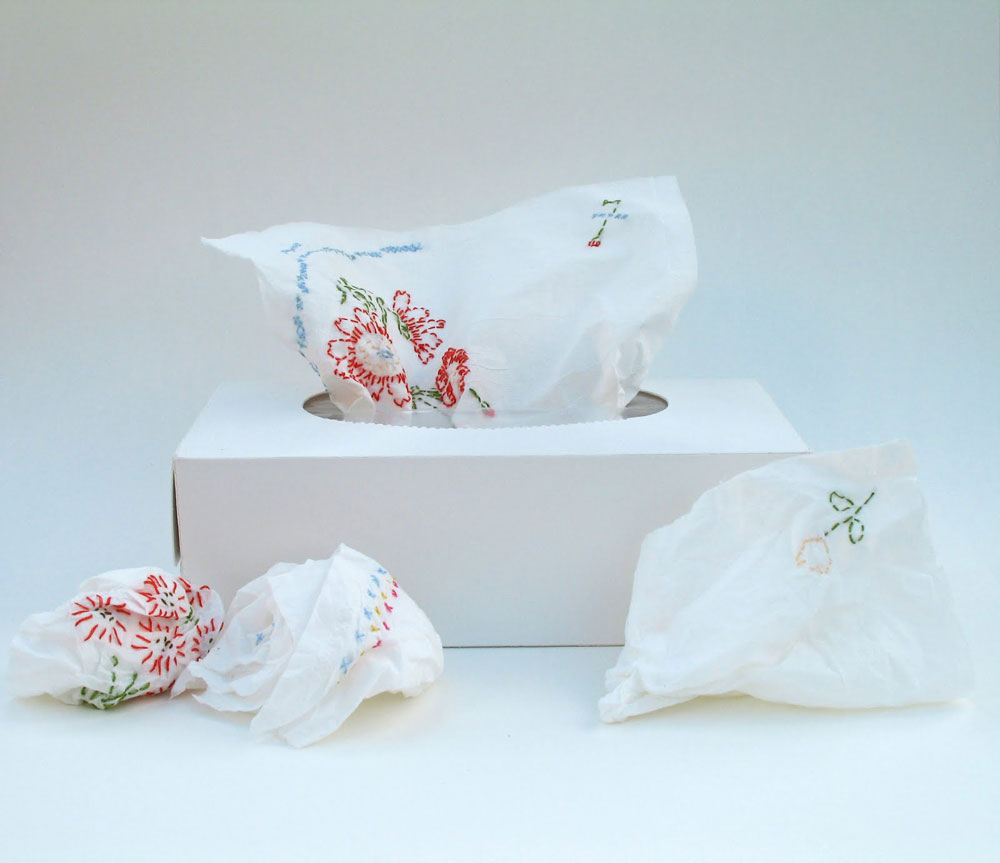Boxes of Kleenex carefully stitched with floral patterns. Piles of Cheerios meticulously embroidered with bright pink, green and purple yarns. Rolls of paper towels laboriously ornamented with dots of red and orange thread.
These are just some of the items going on view this week in Calgary as artist Kate Jackson launches her latest exhibition at Stride Gallery.
Jackson’s speciality is “working with materials that don’t have a lifespan as long as I do.”
“I have also been taking leaves from a tree, and embroidering those as they fall,” Jackson, who is based in Toronto, tells Canadian Art in a phone interview. “There will also be bouquets of flowers that I have embroidered that will wilt within the duration of the show.”
While some of Jackson’s works may initially seem light and whimsical—especially those colourfully stitched Cheerios—they have heavy origins.
“It’s sort of a way to handle grief, for me,” Jackson says of her practice. “A bunch of people in my life [including my dad] passed away at the same time, and I was suddenly confronted with a fear of loving people”—scared because their time together would inevitably be temporary, she explains.
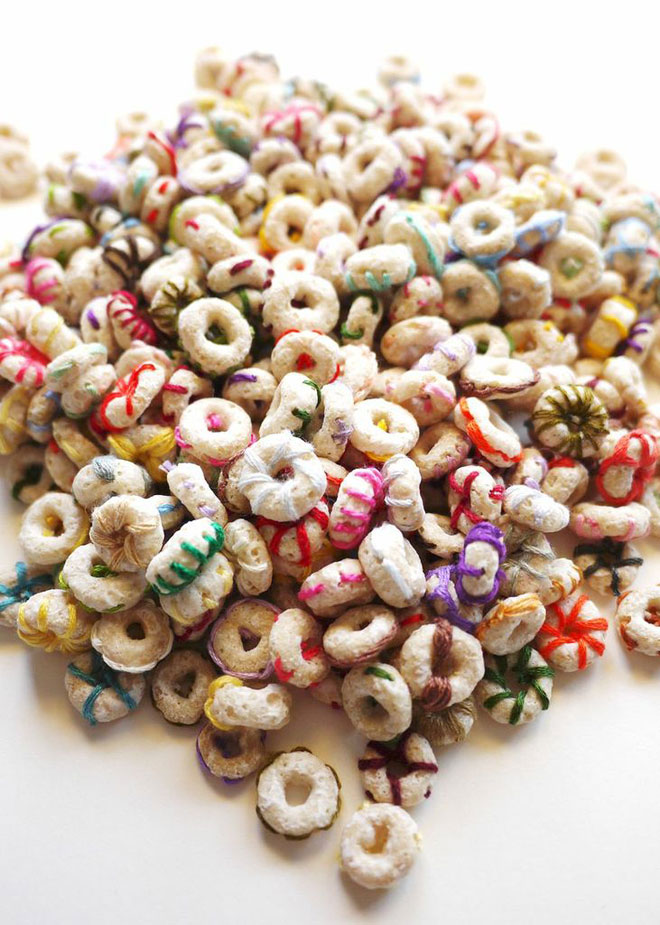 Kate Jackson’s cheerios (2013) consists of 392 hand-embroidered honey-nut Cheerios.
Kate Jackson’s cheerios (2013) consists of 392 hand-embroidered honey-nut Cheerios.
Jackson’s way of learning to “be okay” with life’s temporariness again? Working with materials that will inevitably—and often quickly—decay.
“I’m noticing a real concern with some collectors [and others] now about how the works will change,” Jackson says. “Even though I frame the paper towels, they slowly yellow. Eventually, there will only be the stitching left.”
That kind of conversation, too, is part of the work.
“When people say ‘It will just disappear,’ I’m like, ‘Yeah, that’s what happens in life. That’s what happens with people. It’s okay if it happens in art, too.’”
Jackson first became engaged with textile practice when she went to Mennonite church as a teenager and participated in the church’s quilting circles. From there, she went on to study material arts at OCAD in Toronto, where she learned machine embroidery. Later, she began to practice hand embroidery.
“I realized you could draw with [textiles]. There was colour. There was texture. It became the medium I was most attracted to,” Jackson says.
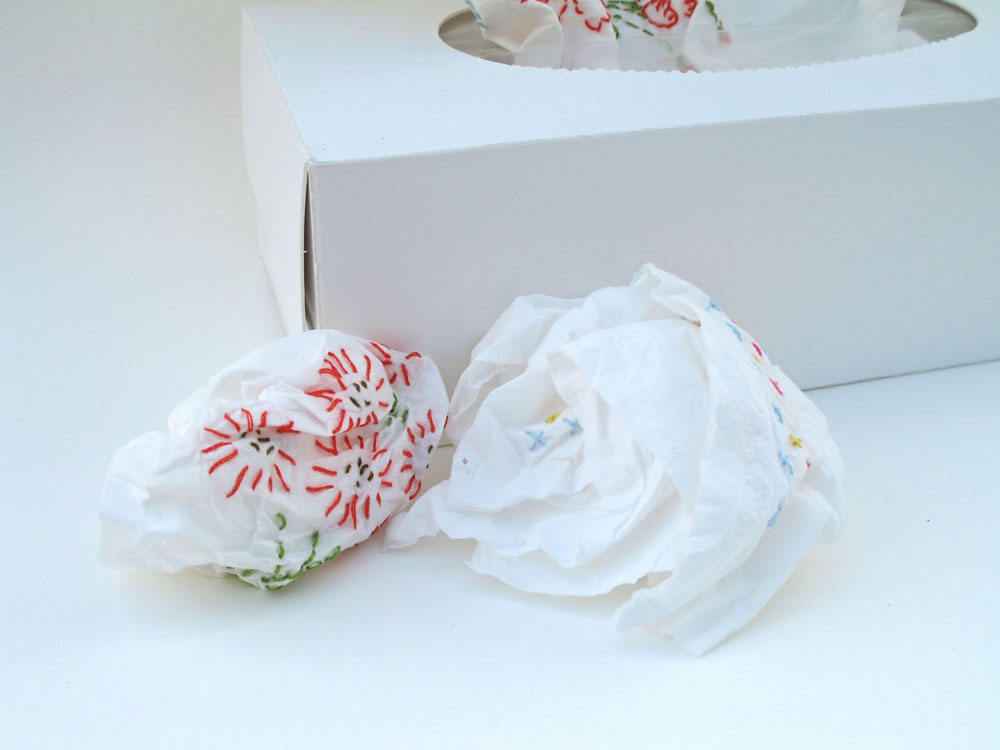 A closer view of Kate Jackson’s embroidered tissues. Photo: Carmen Schroeder. Courtesy the artist.
A closer view of Kate Jackson’s embroidered tissues. Photo: Carmen Schroeder. Courtesy the artist.
But that doesn’t mean every moment in Jackson’s practice is enjoyable. Far from it. When she first started embroidering, she would do it 15 minutes at a time. Now she can spend hours hunched over in one position, stitching French knots onto patterns in a roll of delicate paper—the French-knot process being “akin to drawing one dot over and over and over again,” Jackson explains.
But the stillness and repetition involved in embroidery also makes it “like a form of meditation,” Jackson says. The process also “feeds an obsessive part of me, and that’s something I really like about it.”
Naming artists Judy Chicago, Andy Goldsworthy and Amanda McCavour as inspiration, Jackson sees many productive challenges ahead.
She initially wanted to embroider on insects’ wings for her Calgary show, but that’s an experiment that she needs more time to perfect.
“I’ve also embroidered on ice,” Jackson says, “and it was melting in my hands as I was stitching.”
“Kate Jackson: Nothing is Too Empty A Place to Go” opens September 9 at Stride Gallery in Calgary.
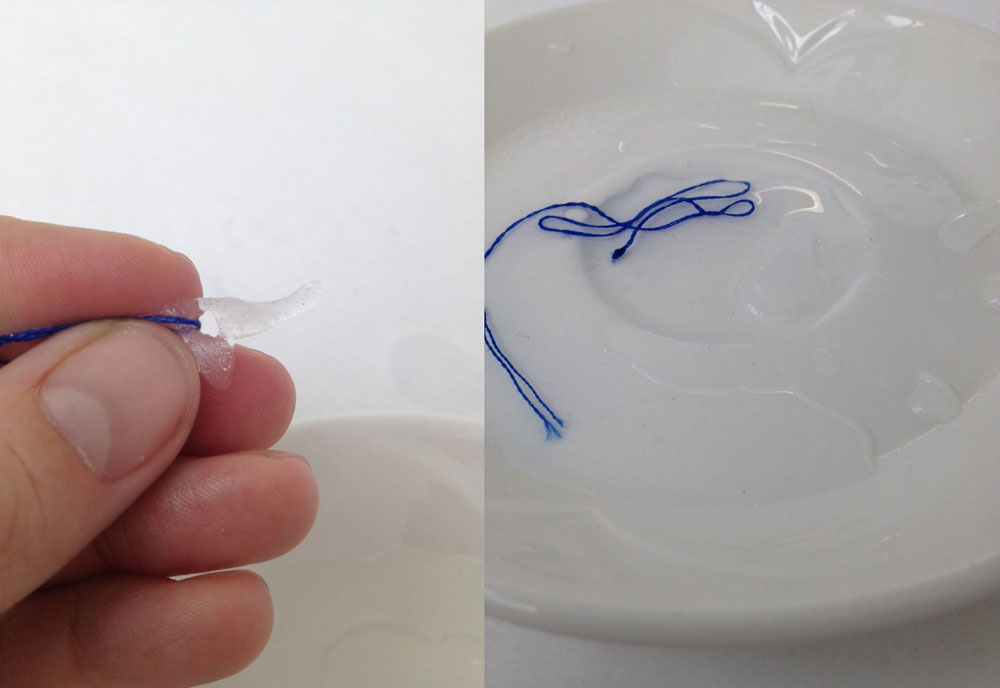 During a residency at the Banff Centre, Kate Jackson practiced embroidering on pieces of ice. Image courtesy the artist.
During a residency at the Banff Centre, Kate Jackson practiced embroidering on pieces of ice. Image courtesy the artist.
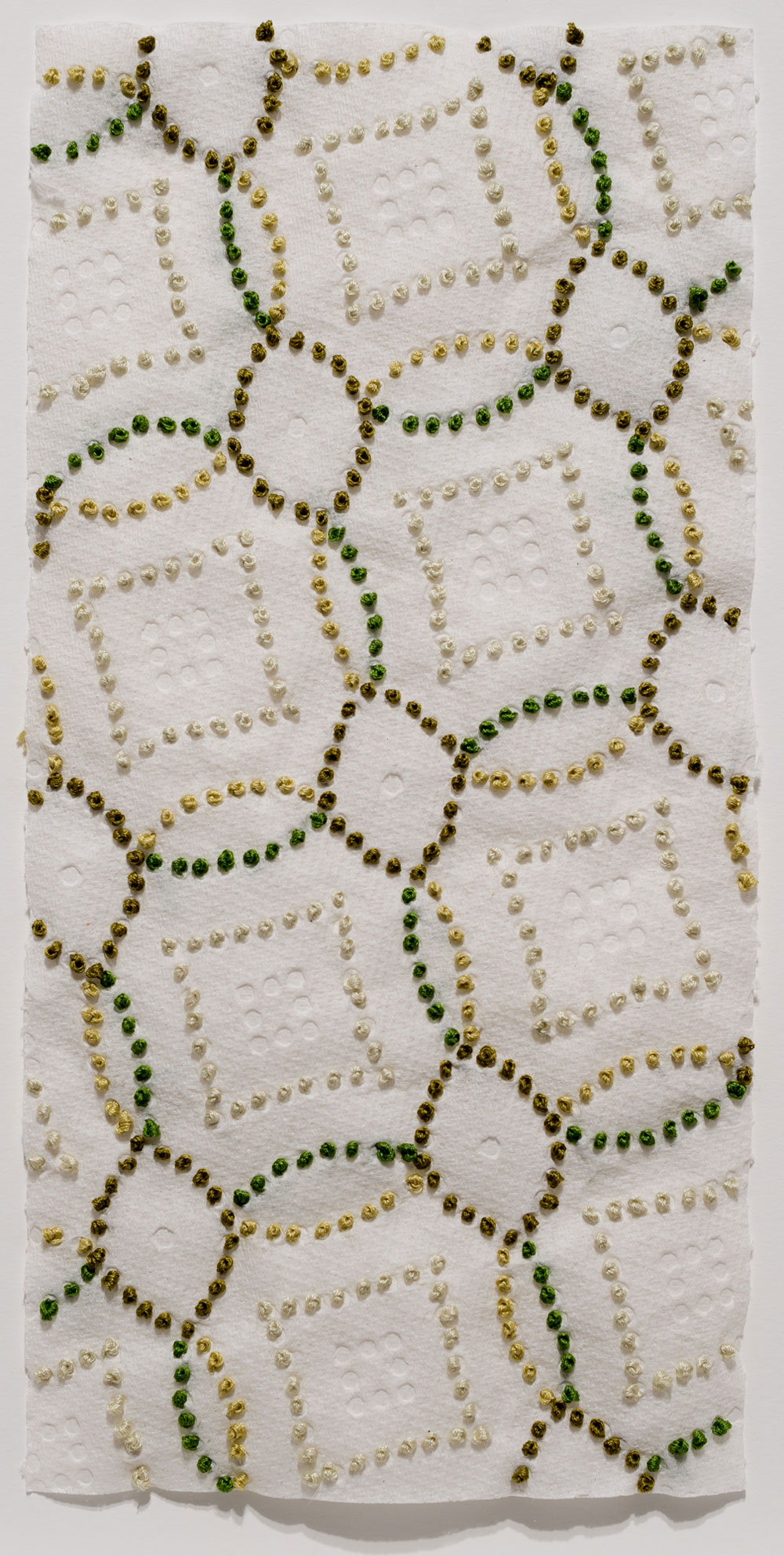 Kate Jackson’s green (2013) consists of hand embroidery on paper towel. Photo: Jesse Boles. Courtesy the artist.
Kate Jackson’s green (2013) consists of hand embroidery on paper towel. Photo: Jesse Boles. Courtesy the artist.
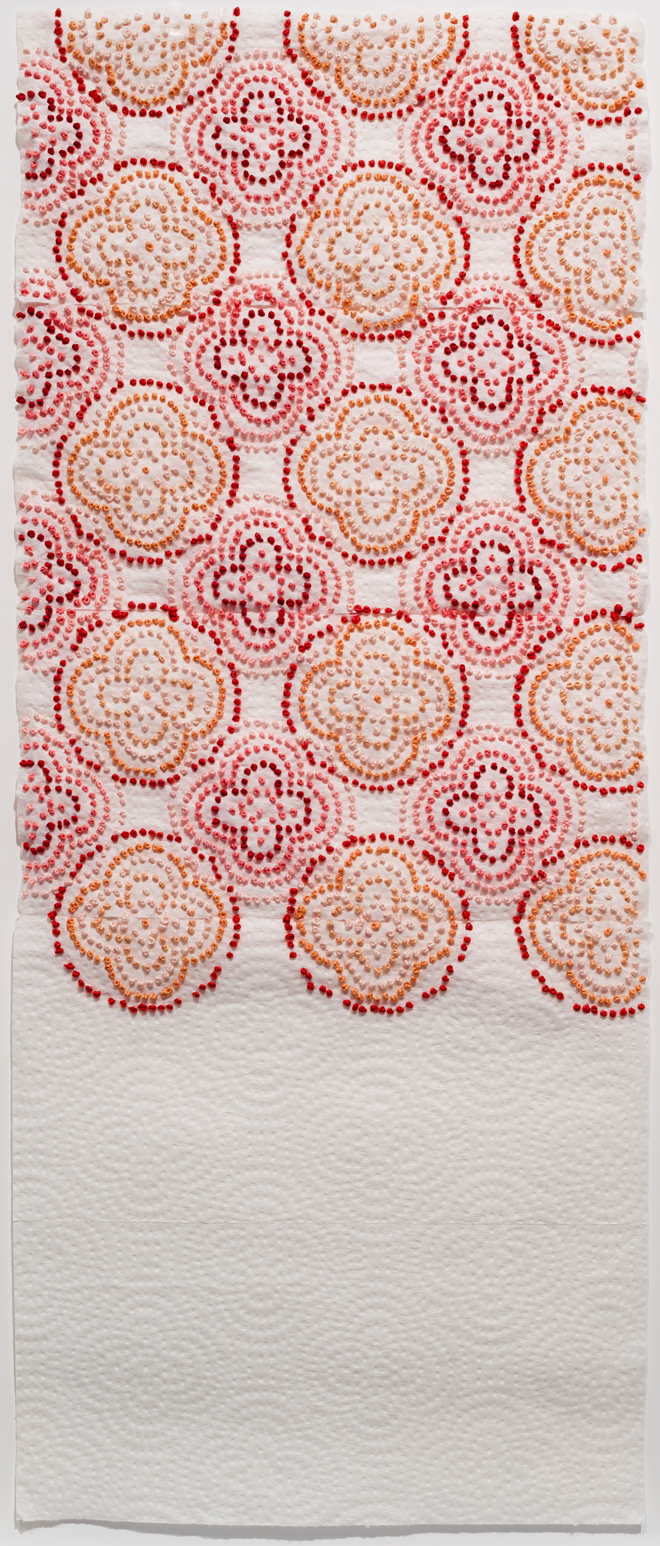 Divots embossed in a paper towel are filled with French dots in Kate Jackson’s pink (2013). Photo: Jesse Boles. Courtesy the artist.
Divots embossed in a paper towel are filled with French dots in Kate Jackson’s pink (2013). Photo: Jesse Boles. Courtesy the artist.

